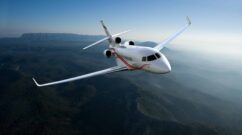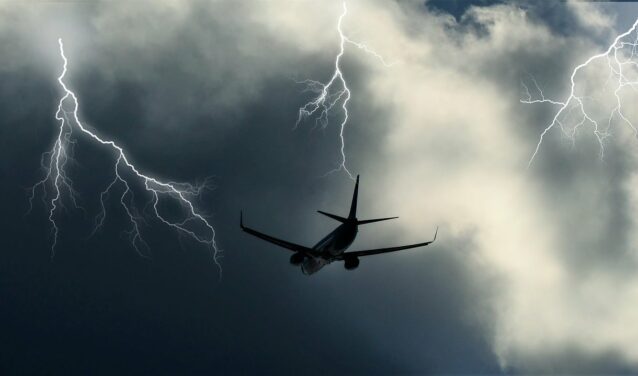What weather conditions can affect a private jet trip?
Weather conditions can have a significant impact on private jet travel. AEROAFFAIRES presents some examples of weather conditions that can affect a private jet trip.
Turbulence conditions.
Turbulence is unpredictable air movement that can cause shaking on board the aircraft. A variety of factors cause turbulence, including weather, mountains, jet streams and thunderstorms. Turbulent conditions can make flying uncomfortable for passengers and crew.
Wind conditions.
Wind can affect the speed and direction of the aircraft. Strong winds can slow down the aircraft and prolong the flight time. Crosswinds can also make landing more difficult. They may require greater skill on the part of pilots.
Rain and snow conditions.
Precipitation can make the runway slippery and affect visibility. If the rain or snow is very heavy, it can also reduce the aircraft’s ability to take off and land. Often the aircraft needs de-icing a few minutes before take-off.
Fog and low cloud conditions.
Fog and low cloud can reduce visibility and make landing more difficult for pilots. Low visibility forces pilots to divert the aircraft to another airport.
In conclusion, because of these weather conditions, pilots need to take extra precautions when flying in private jets. This may include careful route planning, selection of a suitable aircraft and training of pilots to cope with these difficult weather conditions.
How do pilots adapt to difficult weather conditions when flying a private jet?
When flying a private jet, pilots are trained to adapt to adverse weather conditions. Here are some of the steps pilots can take to cope with these conditions:
- Careful route planning: Pilots plan the route according to the weather forecast and choose the best possible route to avoid adverse weather conditions. They can also monitor weather conditions en route to make real-time decisions.
- Use of appropriate aircraft: Modern aircraft are equipped with state-of-the-art technology to deal with severe weather conditions. Aircraft may have de-icing systems. These prevent ice build-up on the wings. Anti-turbulence systems minimise the impact of turbulence.
- Pilot training: Pilots are trained to deal with severe weather conditions when they undergo their initial and ongoing training. They learn to anticipate weather conditions. Thus, their training enables them to take the necessary measures to ensure the safety of passengers and crew.
- Adherence to safety procedures: Pilots follow strict safety procedures to ensure the safety of passengers and crew in adverse weather conditions. They may reduce the speed of the aircraft, adjust the flight path or divert the aircraft to another airport if necessary.
How are private jet pilots trained to cope with adverse weather conditions?
Private jet pilots are trained to cope with adverse weather conditions. They must undergo special training to learn to fly safely in adverse weather conditions.
Training pilots to deal with severe weather includes several aspects:
- Understanding the weather: Pilots must understand weather phenomena such as fronts, pressure systems and cloud types. They must also be able to interpret weather forecasts to plan their flights safely.
- Operational procedures: Pilots must follow special operational procedures to fly safely in difficult weather conditions. This may include special approach and landing procedures for airports with severe weather conditions.
- Simulator training: Pilots are often trained in a simulator to deal with severe weather conditions. This allows them to familiarise themselves with the different situations they may encounter. In this way, they test their reaction in a safe environment.
- Crew resource management: Pilots must be able to work effectively as a team to cope with difficult weather conditions. They must be able to communicate clearly with the crew. This is to enable them to make quick and effective decisions in an emergency.
Ultimately, training pilots to deal with severe weather conditions is essential. It helps to ensure the safety of passengers and crew.
What are the steering tools to deal with weather conditions?
Private jet pilots have a number of piloting tools at their disposal to deal with adverse weather conditions. Some of the most commonly used piloting tools are listed below:
The on-board instruments.
The on-board instruments provide pilots with important information about the aircraft and the surrounding weather conditions. These instruments include
- the autopilot
- flight management system
- altimeter
- Variometer
- thermometer
- air speed sensor
- weather radar.
The weather radar :
The weather radar allows pilots to view real-time weather conditions and identify areas of turbulence, precipitation and strong winds. Pilots can use this information to plan their route and flight altitude to minimise the effects of weather.
De-icing systems :
Private jets are equipped with de-icing systems that allow pilots to quickly de-ice aircraft surfaces that are susceptible to freezing. This can include wings, rudders, elevators, pitot probes and propellers.
Communication systems :
Private jet pilots use communication systems to keep in touch with air traffic controllers and other aircraft in flight. This may include VHF radios, UHF radios, data links and satellite links.
Maps and weather data :
Les pilotes peuvent utiliser des cartes et des données météorologiques. Cela leur permet de planifier leur vol et d’éviter les zones de conditions météorologiques défavorables. Les cartes peuvent inclure des informations sur :
- les vents en altitude
- les températures
- les zones de turbulence
- les fronts météorologiques.
What are the rules and regulations for private jet flights in adverse weather conditions?
The rules and regulations for private jet flights in difficult weather conditions are strict. This ensures the safety of passengers and crew. Here are some of the rules and regulations that apply:
- Performance limits: Aircraft have specific performance limits that must be respected depending on the weather conditions. Pilots must respect these limits to ensure safe flight operation.
- Weather minima: Airports have weather minima that determine whether or not flights can be conducted. These minimums are based on weather conditions such as visibility, ceilings and wind conditions. Pilots must respect these minima to ensure the safety of passengers and crew.
- Approach and landing procedures: Pilots must follow special procedures for approaches and landings in difficult weather conditions. These procedures may include instrument approaches or special approaches to airports with severe weather conditions.
- Aircraft inspections: Aircraft should be inspected regularly to ensure that they are in good flying condition. This includes pre-flight inspections and regular inspections to ensure that all aircraft systems are in good working order.
In summary, the rules and regulations for private jet flights in severe weather conditions are strict and aim to ensure the safety of passengers and crew.
Can private jet flights be delayed due to weather conditions?
Due to adverse weather conditions, flight delays are possible. Private airlines take the safety of their passengers and crew very seriously. They may delay or cancel a flight if the weather conditions are not optimal. Indeed, pilots need to have good visibility to ensure the safety of the flight and the quality of the flying experience for the passengers.
In addition, aircraft can be equipped to deal with different weather conditions, but there are limits to what they can handle. Extreme weather conditions, such as snowstorms, severe thunderstorms or high winds, can make flights unsafe and require delays or cancellations. In such cases, AEROAFFAIRES works with the private airline and in close collaboration with customers to find a safe alternative solution for their trip.
Weather conditions are not good? AEROAFFAIRES will find a solution for you.
As an air brokerage specialist, AEROAFFAIRES has built up strong links with a number of companies. They are there to meet all your needs. The entire AEROAFFAIRES team will offer you the best solution. But above all, the safest solution in the event of bad weather conditions. We will never compromise on your safety and we reserve the right to postpone your departure.
To obtain a quote, or for more information, please use our online contact form or call us on + 33 (0) 1 44 09 91 82 or email us at charter@aeroaffaires.com.






